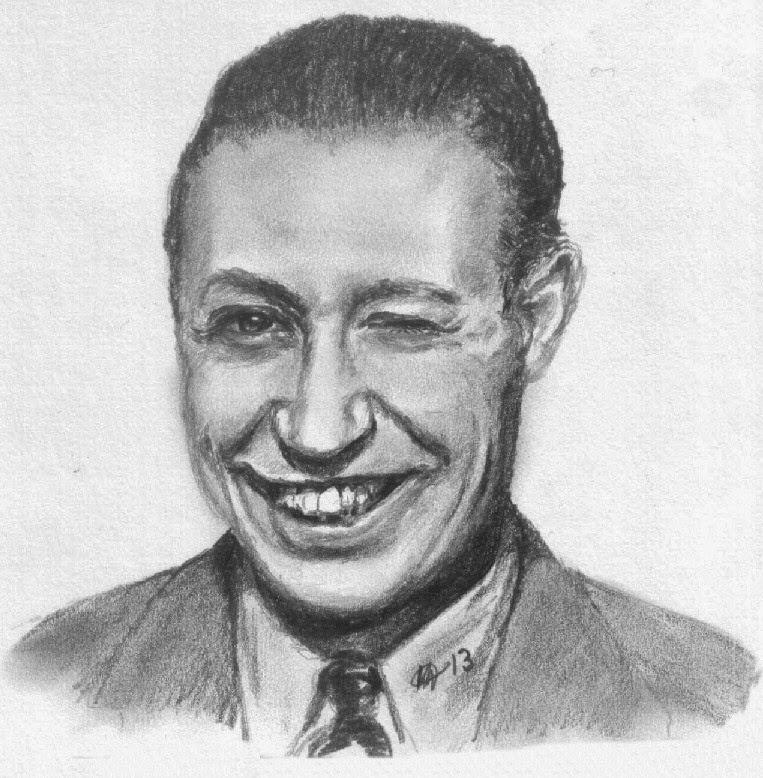Norman Wisdom. Those two
words could divide a nation. Some can’t
get enough of his simple-man slapstick humour.
Others find that his antics get right on their nerves. Personally, I can go either way. It depends
what sort of a mood I’m in and how irritated I feel with the world in
general. If I’m having a good day then I
will laugh indulgently at his unusual approach to life. If, however, the nerves are a bit frayed then
eye-rolling and cheek puffing may set in after a bit.
‘Trouble in Store’ (1953)
is one of his earliest and better ones, made into a must-watch film by the
presence of Margaret Rutherford. She
plays a kleptomaniac shoplifter, tottering around a department store and
filling her suitcase with whatever takes her fancy. It’s not a big role for her
but as usual she tackles it with relish and she is a total joy. Wisdom plays a lowly stock room worker at the
store, where he is repeatedly sacked and re-hired by the new boss. His antics don’t get too annoying in this
film – it’s well before all that daft Mr Grimsdale palaver and there are some
genuinely very funny moments (the revolving door and the ice cream flick stand
out for me). He does sing his “Don’t Laugh at Me” song (yawn) but at least this
is interspersed with scenes of Esma Cannon heaping sugar into her tea, which
makes the ordeal worthwhile.
 |
| Wisdom, by @aitchteee |
There is a feeling of
nostalgia in many of Wisdom’s films. For example, there’s the one where he’s a
horse drawn milkman, fighting against the big conglomerate dairy company with their
fancy electric floats (themselves now the object of nostalgia to us!). ‘Trouble
in Store’ seemed to me to hark back to the good old days of retail. The department store where he works,
Burridges, is a very paternalistic company.
You get the impression that a job with them is a job for life, if you
want it to be. In return for loyalty to the firm staff are given various small
perks, such as a place to park their bikes and recreational facilities and
events. The leader is visible and approachable – not some faceless suit in an
office somewhere else. Jobs like these
have been dying out slowly over the past few decades.
I reflected as I
watched how attractive this workplace
probably looks to those working in retail today. I recently spoke to an old acquaintance who
works in a supermarket, one which prides itself on being cheaper than all the others. Her actual hours
are full time (or even more than full time as I see it) yet she is only on the
books as part time, probably so she doesn’t get all of the working conditions
associated with full time work – and so that they can drop her hours at a
moment’s notice if they want to. She feels insecure and would leave if there
was anywhere else to go. This is how they make their goods so cheap - on the backs of their staff.
A friend spoke to someone
who works for a major department store.
They are not replacing staff who leave and this means that on Sunday
mornings she now unhappily works alone on her floor. Margaret Rutherford’s character would be very
interested in that piece of information!
Zero hours contracts too are becoming more common, offering only
insecurity to thousands of families.
These days, employers seem to take the attitude that you are lucky to
find work of any kind. There is some
truth in that, but why use this as an excuse to treat your workers like another
piece of stock? These are probably the
same employers that complain about the under educated workforce, not having
heard the old adage about paying peanuts and getting monkeys. Where is the
incentive to do better?
We may laugh at Norman’s
original 1950s audience – weren’t we a simple people back then? How unsophisticated we were to make this a
box office hit. To think that this is what made us laugh then! But if we were to go back in time and meet
our grandparents 60 years ago; and tell them how we aspire to find a job in a
place as good as Burridges, where your job was safe and your wellbeing taken
care of, what would they think? When we told them about our Dickensian jobs,
who would be the ones laughing then?
.jpg)
.jpg)

.jpg)






.jpg)
.jpg)




.jpg)
.jpg)

.jpg)